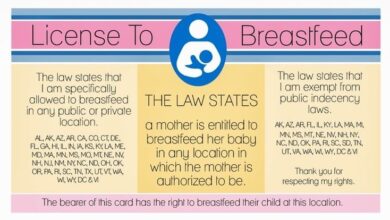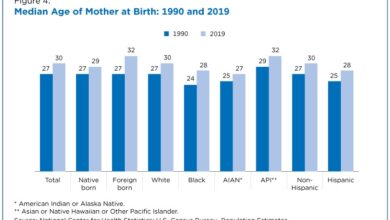
Breast feeding while pregnant – Breastfeeding while pregnant might seem unusual, but it’s a viable option for many mothers. This exploration delves into the biological aspects, potential benefits, and challenges of this practice. We’ll examine the physiological changes in a pregnant woman’s body that can affect breastfeeding, discuss historical perspectives, and highlight the potential difficulties. Understanding these factors is key to making informed decisions about your pregnancy and breastfeeding journey.
This comprehensive guide offers a nuanced perspective on the intricacies of breastfeeding during pregnancy, considering both the potential advantages and drawbacks for both mother and baby. We will analyze the nutritional benefits of the milk for both the nursing and the pregnant infant, along with how this practice can impact the mother’s overall health and well-being. It’s important to remember that individual experiences can vary, and this discussion will equip you with the knowledge to navigate this unique situation.
Introduction to Breastfeeding While Pregnant

Breastfeeding while pregnant, a practice with a rich history and ongoing discussion, involves the production and consumption of breast milk during pregnancy. This unique scenario presents both biological possibilities and potential challenges. Understanding the intricacies of this practice is crucial for expectant mothers and those supporting them.The physiological changes in a pregnant woman’s body are profound and can significantly affect breastfeeding.
Hormonal fluctuations, particularly the surge in prolactin (the hormone responsible for milk production) alongside the pregnancy hormones, create a complex interplay that can influence milk production. The growing uterus and the increasing blood volume also affect milk flow and delivery. It’s essential to acknowledge that the body adapts to this dual demand, and individual experiences vary greatly.
Biological Aspects of Breastfeeding During Pregnancy
The human body is remarkable in its ability to adapt to multiple physiological demands. During pregnancy, the breasts undergo significant changes in preparation for lactation. The mammary glands enlarge, the milk ducts expand, and the alveoli, the milk-producing units, proliferate. This preparatory process, often subtle, is part of the natural course of pregnancy and can potentially support breastfeeding.
The body’s natural hormonal balance adjusts to support both pregnancy and milk production, although this adjustment is not uniform across all individuals.
Potential Benefits of Breastfeeding While Pregnant
Breastfeeding during pregnancy, while not as common as exclusively breastfeeding postpartum, can offer several benefits. The transfer of antibodies from mother to infant, even before birth, is a significant advantage. Furthermore, breast milk, even during pregnancy, provides the infant with essential nutrients and immunological support. For the mother, this practice can contribute to uterine involution, potentially reducing postpartum bleeding.
Studies suggest that breastfeeding while pregnant may even reduce the risk of certain complications during pregnancy.
Breastfeeding while pregnant? It’s definitely a fascinating topic, and one that’s surprisingly common. Recently, I was reading an insightful interview with Justin Baldoni interview with justin baldoni , where he touched on some powerful perspectives on family and personal growth. His journey reminded me of the complexities involved in breastfeeding while pregnant – it’s a testament to the incredible adaptability of the human body.
It definitely takes dedication and awareness.
Potential Challenges and Concerns
While breastfeeding while pregnant presents opportunities, it also introduces potential challenges. One major concern is the potential for discomfort or pain associated with engorgement, which can arise as the breasts begin producing milk in response to hormonal changes. Another potential issue involves establishing a proper supply of breast milk for the infant, which requires careful management and support.
The timing and the amount of milk produced can be inconsistent during pregnancy. Additionally, some mothers may experience concerns about the nutritional adequacy of the milk produced during pregnancy.
Comparison Table
| Aspect | Description | Potential Benefit | Potential Drawback |
|---|---|---|---|
| Hormonal Changes | Fluctuations in prolactin and pregnancy hormones | Increased milk production potential | Irregular milk production and potential discomfort |
| Uterine Changes | Growth and expansion of the uterus | Potential support for postpartum recovery | Potential pressure on the breasts |
| Milk Composition | Potential variations in nutrient content during pregnancy | Initial antibody transfer to the infant | Potential nutritional adequacy concerns |
| Infant Needs | Developing infant needs | Early exposure to maternal antibodies | Inconsistencies in milk production |
Benefits of Breastfeeding While Pregnant
Breastfeeding while pregnant, a seemingly unusual practice, offers a wealth of benefits for both the mother and the developing baby. This unique approach to lactation provides a continuation of maternal nutrition for the infant and a supportive health benefit for the mother. Understanding these advantages can empower expecting mothers to consider this option as a valuable part of their pregnancy journey.
Ever wondered about breastfeeding while pregnant? It’s a fascinating concept, and while not common, it’s definitely possible. Recent breakthroughs, like the advancements in pharmaceutical technology with companies like the one working on a pill to replace injected drugs ( company working on pill that would replace injected drugs ), might lead to a new understanding of maternal nutrition.
This could potentially impact our understanding of breastfeeding during pregnancy in the future. Ultimately, more research is needed to fully grasp the potential benefits and risks.
Nutritional Benefits for Both Mother and Baby
The nutritional composition of breast milk during pregnancy remains largely consistent with that produced after delivery. This means the milk continues to be a dynamic source of antibodies, vitamins, and essential nutrients vital for the infant’s growth and development. The composition of the milk adapts throughout pregnancy, responding to the changing needs of both the nursing infant and the pregnant mother.
This dynamic adaptation ensures the milk remains a highly nutritious source of nourishment for both. Crucially, the nutrients are tailored to support the growth and development of the infant while simultaneously providing support for the mother’s overall health and well-being.
Impact on Maternal Health and Well-being
Breastfeeding during pregnancy has been associated with several positive impacts on the mother’s overall health. Increased prolactin levels, a key hormone in lactation, may contribute to reduced risk of certain conditions. This includes a possible reduction in the risk of certain types of cancers, potentially stemming from the hormonal changes associated with breastfeeding. Furthermore, the physical act of breastfeeding can contribute to the overall well-being of the mother.
The physical closeness and bonding with the baby can also promote emotional stability and a sense of accomplishment.
Comparison to Postpartum Breastfeeding
While the nutritional benefits are similar, there are subtle differences between breastfeeding during pregnancy and after delivery. During pregnancy, the milk production is primarily supporting the nursing infant, and the composition of the milk is likely to change in response to the mother’s nutritional intake, as well as her overall health. Postpartum breastfeeding, on the other hand, focuses on the increased nutritional needs of the infant after birth, and the composition of the milk may adjust to reflect these changes.
Benefits Table
| Benefit | Explanation | Supporting Evidence | Potential Considerations |
|---|---|---|---|
| Enhanced Nutritional Intake for Baby | Breast milk during pregnancy continues to provide essential nutrients, antibodies, and growth factors vital for the baby’s development, adapting to the changing needs. | Studies have shown that breast milk composition during pregnancy is comparable in nutritional value to that produced after delivery, with crucial antibodies and nutrients. | The mother’s diet and overall health play a significant role in the quality of breast milk during pregnancy. |
| Potential Reduction in Cancer Risk | Increased prolactin levels associated with breastfeeding may contribute to a lower risk of certain cancers in the mother. | Studies have shown a potential correlation between breastfeeding and reduced risk of certain cancers, though further research is needed. | Additional factors, such as lifestyle choices and genetics, contribute to cancer risk. |
| Improved Bonding | The physical closeness and connection between mother and baby during breastfeeding during pregnancy can promote emotional well-being. | Studies show that physical touch and bonding during pregnancy can be beneficial to both mother and child. | Individual experiences may vary, and support systems are essential. |
| Potential Weight Management | Hormonal changes associated with breastfeeding may contribute to weight management during pregnancy. | The hormonal changes during pregnancy and breastfeeding may influence metabolism and calorie expenditure. | Diet and exercise are crucial for overall weight management during pregnancy. |
Potential Challenges and Considerations
Breastfeeding while pregnant presents a unique set of circumstances, and understanding potential challenges is crucial for a smooth and successful experience. Navigating fluctuations in milk supply, maintaining a healthy lifestyle, and being aware of potential complications are all vital components of this journey. This section delves into these considerations, providing insights and strategies for a positive outcome.A pregnant breastfeeding mother needs to be aware of potential difficulties and proactively address them.
Maintaining a healthy lifestyle, including a balanced diet and regular exercise, is paramount for both the mother’s and the baby’s well-being. Recognizing potential complications, like mastitis, and seeking prompt medical attention when necessary are critical for ensuring a healthy experience.
Milk Supply Fluctuations
Milk production is a dynamic process, and pregnancy hormones can impact milk supply. Fluctuations in milk supply are common during pregnancy. These fluctuations can range from temporary decreases to more significant changes. A balanced diet and sufficient hydration are crucial for supporting consistent milk production. Frequent, on-demand nursing and expressing milk can also help maintain a healthy supply.
Maintaining a Healthy Lifestyle
Maintaining a healthy lifestyle is essential for both the mother and the baby. Adequate nutrition, including a balanced intake of vitamins and minerals, is critical for supporting both the mother’s health and the baby’s development. Regular exercise, within the limitations of pregnancy, promotes overall well-being. Adequate rest is also important to help the body cope with the demands of pregnancy and breastfeeding.
Potential Complications
Certain complications can arise during breastfeeding while pregnant. Mastitis, an infection of the breast tissue, is a potential concern. Symptoms may include pain, redness, and swelling. Other potential complications, like blocked milk ducts or sore nipples, can also occur. Prompt medical attention is essential if any concerning symptoms arise.
Role of Medical Professionals
Medical professionals play a vital role in supporting breastfeeding mothers. They can provide guidance on managing potential challenges and offer support throughout the pregnancy and breastfeeding journey. Lactation consultants are invaluable resources for addressing specific concerns and providing tailored advice. Regular check-ups with healthcare providers allow for early detection of any potential complications and ensure appropriate management.
Table of Potential Challenges
| Challenge | Possible Cause | Mitigation Strategies | When to Consult a Professional |
|---|---|---|---|
| Milk supply fluctuations | Hormonal changes, increased fluid needs of the growing fetus, dietary changes | Maintaining a healthy diet rich in nutrients, frequent nursing or pumping, sufficient hydration, and seeking professional advice | If fluctuations are significant or persistent, or if there are concerns about the baby’s feeding |
| Mastitis | Bacterial infection of the breast tissue, poor latch, or infrequent emptying of breasts | Maintaining good hygiene, ensuring proper latch, frequent nursing or pumping, and applying warm compresses | If symptoms like pain, redness, or swelling persist, or if fever develops |
| Sore nipples | Improper latch, pressure on nipples, insufficient use of breast shields, or infrequent nursing | Seeking professional advice for proper latch techniques, using breast shields or nipple cream as needed, and frequent nursing | If pain is severe or persistent, or if there is visible damage to the nipples |
| Blocked milk ducts | Poor milk flow, infrequent nursing, or dehydration | Applying warm compresses, gentle massage, frequent nursing or pumping, and adequate hydration | If pain or swelling persists, or if symptoms worsen |
Practical Advice and Strategies

Navigating breastfeeding while pregnant can be a rewarding but sometimes challenging journey. This section offers practical advice and strategies to help you manage your milk supply, comfort, and schedule throughout your pregnancy. Understanding these strategies can help you maintain a healthy and enjoyable experience.Managing your milk supply during pregnancy requires proactive steps. The key is to avoid overstimulation and maintain a comfortable routine that supports the production of breast milk while also ensuring your body’s overall well-being during pregnancy.
Managing Milk Supply During Pregnancy
Maintaining a consistent milk supply during pregnancy involves a delicate balance. Breastfeeding while pregnant doesn’t necessarily mean producing a large amount of milk. Your body is primarily preparing for lactation after birth. However, maintaining a regular feeding schedule can help your body establish a milk supply for later.
- Regular Expression: Breastfeeding during pregnancy should be a regular part of your routine, mimicking the schedule you plan to follow post-delivery. Frequent, short feedings are more effective than infrequent, longer sessions in the early stages of lactation.
- Adequate Hydration: Staying adequately hydrated is crucial for milk production. Drink plenty of water throughout the day to support your overall health and breast milk supply.
- Nutrient-Rich Diet: A balanced diet rich in nutrients supports both your and your baby’s health. Include foods that are known to support lactation, such as leafy greens, fruits, and whole grains. Consult with a healthcare professional for personalized dietary recommendations.
Addressing Discomfort or Pain
Some discomfort is normal during breastfeeding, even while pregnant. However, persistent or severe pain requires attention. Taking proactive steps can significantly improve your experience.
Breastfeeding while pregnant? It’s definitely a unique situation, and while it might seem counterintuitive, it’s totally possible. This is a fascinating area of research, and the benefits for both mother and baby are significant. In the midst of all this, though, recent reports from the CDC regarding monkeypox, specifically the news that it’s not likely airborne, cdc says monkeypox not likely to be airborne reports 45 cases in u s highlights the importance of staying informed about current health issues, which can inform decisions about breastfeeding practices.
Ultimately, careful consideration of both health issues is crucial for a healthy pregnancy and breastfeeding experience.
- Proper Positioning: Employing correct breastfeeding positions can significantly reduce discomfort. Finding a position that allows for proper latch and milk flow is key. Seek guidance from a lactation consultant if you experience persistent discomfort.
- Frequent Breaks: Frequent short feedings can help prevent and reduce discomfort. Taking breaks between feedings can allow your breasts to rest and reduce pressure.
- Support and Compression: Using supportive bras and breast pads can help alleviate pressure and discomfort. Look for bras designed for nursing or consider a nursing pillow.
Maintaining a Consistent Breastfeeding Schedule
Consistency in your breastfeeding schedule during pregnancy can prepare your body for the postpartum period. It’s essential to establish a routine that allows your body to regulate milk production and prepares you for breastfeeding after birth.
- Regular Feedings: Establish a schedule for breastfeeding that suits your pregnancy. This schedule should include regular, short sessions, as this approach is crucial for establishing a milk supply for the postpartum period.
- Consistent Time Intervals: While frequency is important, consistency in the time intervals between feedings is also beneficial. Consistency can help your body regulate milk production.
- Responding to Baby’s Cues: Pay attention to your baby’s cues. Observe your baby’s cues, and respond accordingly, ensuring that your baby is getting enough nourishment.
Various Positions for Comfortable Breastfeeding During Pregnancy
Several positions can help you breastfeed comfortably during pregnancy. Each position offers unique benefits for both you and your baby.
- Cross-Cradle Hold: The cross-cradle hold involves cradling your baby across your lap, supporting their head and neck. This position is suitable for newborns and can be easily adapted as your baby grows.
- Football Hold: The football hold is a comfortable position for both you and your baby. This position supports your baby’s back and head, and is often preferred for mothers who have back pain or find it difficult to hold their baby in other positions.
- Side-Lying Position: The side-lying position allows for comfortable feeding and support for both you and your baby. This position can be especially helpful for mothers who have back pain or find it difficult to sit upright.
Practical Strategies for Breastfeeding While Pregnant
This table summarizes different situations, actions, expected outcomes, and possible alternatives when breastfeeding while pregnant.
| Situation | Action | Expected Outcome | Possible Alternative |
|---|---|---|---|
| Sore nipples | Use a breast pump for short feedings to avoid nipple damage | Less nipple pain and discomfort during feedings | Apply warm compresses or cold packs after feedings |
| Milk leakage | Wear supportive nursing bras | Reduced discomfort and leakage | Use breast pads to absorb milk |
| Difficulty latching | Seek assistance from a lactation consultant | Improved latch and milk flow | Try different breastfeeding positions |
| Increased milk production | Increase water intake and nutrient-rich foods | Maintained milk supply | Consult with a healthcare professional for guidance |
Support Systems and Resources: Breast Feeding While Pregnant
Navigating the journey of breastfeeding while pregnant can be incredibly rewarding, but also challenging. Having a strong support system in place is crucial for success and well-being during this unique period. Understanding the available resources and proactively seeking support from various sources can significantly ease the transition and empower you to achieve your breastfeeding goals.A supportive network, encompassing family, friends, and healthcare professionals, can provide emotional encouragement, practical assistance, and valuable guidance.
Access to reliable information and resources, both online and offline, can bridge knowledge gaps and address any concerns that arise. Finding the right support groups and connecting with experienced lactation consultants can further solidify your understanding and confidence in this endeavor.
Importance of Support from Family, Friends, and Healthcare Providers
Family and friends can play a vital role in providing emotional support and practical assistance during pregnancy and breastfeeding. Sharing your experiences, concerns, and joys with loved ones creates a safe space for open communication and fosters a sense of community. Healthcare providers, including your obstetrician or midwife, play a critical role in providing medical guidance, monitoring your progress, and addressing any potential complications.
They are invaluable resources for answering questions, offering advice, and ensuring your health and well-being.
Identifying Organizations and Websites Offering Resources
Numerous organizations and websites provide comprehensive information and support for breastfeeding mothers. La Leche League International, for instance, is a well-respected global organization offering a wealth of resources, including articles, support groups, and lactation consultants. The website of the World Alliance for Breastfeeding offers international perspectives and promotes breastfeeding initiatives worldwide. These resources can provide a deeper understanding of the nuances of breastfeeding while pregnant.
Finding Local Support Groups and Lactation Consultants, Breast feeding while pregnant
Locating local support groups and lactation consultants can be facilitated through online searches, inquiries with your healthcare provider, or recommendations from other breastfeeding mothers. Support groups offer a platform to connect with other mothers facing similar challenges, providing encouragement, sharing experiences, and building a sense of community. Lactation consultants are experts in breastfeeding techniques and can offer personalized guidance and support, addressing specific concerns and optimizing breastfeeding practices.
Utilizing Online Communities for Support and Advice
Online communities dedicated to breastfeeding offer a valuable platform for connecting with other mothers, sharing experiences, and seeking advice. Online forums, social media groups, and dedicated websites provide a virtual space for support and encouragement. Engaging with these communities can help build confidence, alleviate anxieties, and provide a sense of belonging.
Table of Resources
| Resource Type | Example | Contact Information |
|---|---|---|
| Organizations | La Leche League International | Visit their website for contact details. |
| Websites | World Alliance for Breastfeeding | Visit their website for contact details. |
| Local Support Groups | Local La Leche League chapter or breastfeeding support group | Search online or contact your healthcare provider for referrals. |
| Lactation Consultants | Certified Lactation Consultant (IBCLC) | Contact your healthcare provider for referrals. |
Illustrative Examples
Breastfeeding while pregnant, though possible and often beneficial, can present unique challenges and triumphs. Understanding real-life scenarios provides valuable insight into the diverse experiences of mothers navigating this journey. These examples highlight the spectrum of experiences, from smooth transitions to those requiring extra support.
A Successful Breastfeeding Journey
Amelia, a 32-year-old, experienced a seamless transition to breastfeeding while pregnant with her second child. She had successfully breastfed her first child for two years and, with careful planning and support from her lactation consultant, continued breastfeeding during her pregnancy. Her body readily adjusted to the increased demand. Amelia meticulously monitored her diet, ensuring adequate intake of nutrients crucial for both her and her growing baby.
She understood that breastfeeding during pregnancy might require slight adjustments to her existing routine. This adjustment included strategically timed feedings and ample rest. Her understanding of her body’s needs, coupled with expert advice, made her experience remarkably smooth.
Overcoming Challenges with Support
Sarah, a 28-year-old, experienced discomfort and milk supply fluctuations during her pregnancy. Initially, she struggled with latch issues and pain, leading to frustration and anxiety. Recognizing the importance of support, Sarah reached out to a lactation consultant. The consultant provided personalized guidance and addressed her concerns, suggesting techniques to improve latch and reduce pain. Sarah also joined a local breastfeeding support group, finding solace and encouragement from other mothers facing similar challenges.
The collective experience and shared advice helped her navigate the difficulties and ultimately maintain breastfeeding throughout her pregnancy. The key takeaway was the importance of seeking professional help and joining a supportive community.
Dietary Adjustments and Breastfeeding
A hypothetical scenario involves a woman with a pre-existing dietary restriction, such as lactose intolerance. To maintain a healthy pregnancy and support breastfeeding, she meticulously adjusted her diet, ensuring adequate calcium intake from alternative sources like fortified plant-based milks, leafy greens, and tofu. Careful planning and consultation with a registered dietitian helped her maintain a balanced diet while breastfeeding during her pregnancy.
This illustrates the importance of individualized dietary approaches in breastfeeding mothers.
Potential Complications During Pregnancy
Consider a case study of a breastfeeding mother diagnosed with gestational diabetes. Maintaining blood sugar levels and supporting breastfeeding were crucial. She worked closely with her healthcare team, including a registered dietitian and lactation consultant, to manage her blood sugar effectively. The team provided dietary guidance and support to maintain adequate milk supply and ensure the health of both mother and baby.
This demonstrates how careful management and proactive support are essential when complications arise.
A Supportive Community
A local breastfeeding support group offered a sense of belonging and shared experiences. Mothers shared stories, tips, and advice, creating a comforting and encouraging environment. They provided practical advice on navigating challenges, offering emotional support and mutual understanding. New mothers felt less isolated, knowing they were part of a larger network of support. This example emphasizes the power of community in supporting breastfeeding mothers.
The group’s encouragement helped mothers navigate the journey, from the initial stages to the challenges of continued breastfeeding throughout the pregnancy.
Final Conclusion
In conclusion, breastfeeding while pregnant is a complex but potentially rewarding experience. While challenges may arise, with proper knowledge, support, and adjustments, it can be a successful and healthy choice. This discussion has highlighted the importance of informed decision-making, seeking professional guidance, and understanding the individual needs of both the mother and the baby. Ultimately, this exploration underscores the profound connection between a mother’s health and her baby’s well-being during this unique phase of pregnancy.




